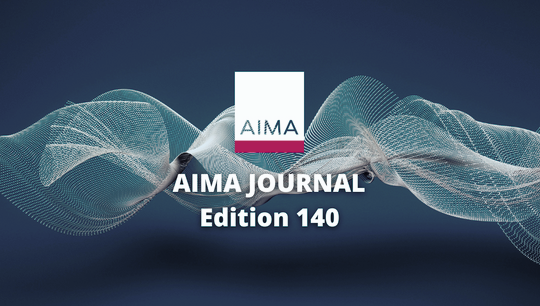HMRC guidance boosts the case for credit fund QAHCs
By Daniel Hawthorne; Nicolas Kokkinos; Mark Stapleton, Dechert
Published: 20 September 2022
Introduction/Background
The UK Qualifying Asset Holding Company (QAHC) is a new tax advantaged regime for UK resident companies that was introduced into UK law by the Finance Act 2022 with effect from 1st April 2022 . It is the result of an enormous amount of lobbying by various industry bodies in the fund management sector, including AIMA and the ACC, together with a huge amount of consultation and effort on the part of HMRC and HMT. The QAHC is designed to be an intermediary holding company to own fund assets in the private equity, private credit and real estate sectors. At present, most of these types of intermediary companies are established in Luxembourg or Ireland (at least in terms of funds managed by UK or EU based fund managers). Accordingly, the QAHC rules are designed to compete with their Luxembourg and Irish counterparts so far as possible.
Time will tell whether the QAHC can compete effectively with its EU competitors but one of the main concerns in deciding whether to use a QAHC is to ensure that it can and will continue to meet the qualifying conditions necessary to access the regime’s crucial UK tax benefits. Leaving aside the relatively complex ownership condition that a QAHC must meet (which is not addressed in this article) it is also imperative that the QAHC carries on an “investment” rather than a “trading” activity in order to meet the activity condition (or at least that any trading activity is merely ancillary to the main investment activity). The distinction/dividing line between an investment and a trading activity has always been somewhat grey in terms of the activities of funds owning financial assets and the initial guidance put out by HMRC on this point relating to QAHCs did little to shed additional light on the issue. In particular, while most in the industry would normally expect typical loan origination funds to carry on an investment activity, some uncertainty existed in this regard due to the quasi-banking nature of the activity and the fact that fees are often generated in connection with the activity.Accordingly, representatives of industry bodies focused on the credit fund space, including AIMA and the ACC, requested further guidance to be issued by HMRC to try to clarify their views on this topic and as a result additional helpful guidance was issued in early June this year.
The new guidance
The guidance can be found in the HMRC Manuals at IFM40260. In particular, the new guidance sets out further commentary and some specific illustrative examples as to how the key activity test will be applied to certain facts, including loan origination activity (and in particular whether it is an allowable investment activity or a prohibited trading activity). One of the key points to note coming out of the examples is that it is crucial that the intention of the QAHC is to hold debt (whether originated itself or acquired from a third party) for the medium to long term and therefore it will be important for contemporaneous evidence of that intention to be available. For example, company board minutes outlining the intention of the QAHC in terms of the intended holding period of the debt would be an extremely useful record of the intention of the QAHC, especially in circumstances where unexpected opportunities or circumstances force an earlier sale or redemption of the debt. Also, evidence in the form of promotional literature or statements setting out the intended holding period in the strategy section of an Offering Memorandum to investors would be helpful. Unfortunately, but perhaps not surprisingly, there are no bright lines as to what constitutes the medium to long term but the examples indicate that it is likely to mean holding periods of several years and certainly not weeks or months.
Another key point that emerges from the guidance and the examples is that fees received in conjunction with loan origination activity (such as origination, participation, documentation or consent fees) may form part of the investment return alongside portfolio investment income without causing the activity to become a trading activity. In addition, the activity of loan origination will not of itself be considered to be a trading activity or an indication that the company is trading. However, if the QAHC engages in activity such as arranging loans for the benefit of ownership by others or receives significant syndication fees that could lead to a conclusion that the activity is a trading activity. In practice therefore, if such activity might be a part of what the QAHC does, it would be important to evidence at the outset that the intention of the company is that any such fee income or arranging/syndication activity would only be a small incidental part of the overall investment strategy of the QAHC.
The new guidance does reference that a very high turnover of assets/holding assets in the short term is indicative of a trading activity. However, there is a helpful example that notes that where a bundle of assets are acquired but where not all are intended to be retained, the fact that some unwanted assets are sold in the short term should not prejudice the status of the company assuming the intention is to hold the retained assets for the medium to long term.
Distressed debt strategies
As noted above, the new guidance gives comfort that credit/debt funds that originate or acquire loans with the intention of owning them for the medium to long term should be capable of satisfying the activity condition. However, what about strategies involving the acquisition and sale of distressed debt that are more focused on generating gains rather than income yield? A specific example in the guidance seeks to address this and indicates that provided the initial intention is to hold the debt for the medium to long term it can still satisfy the activity test even if opportunities are taken to sell down the debt from time to time or participate in a debt restructuring or even insolvency activity prior to the final maturity of the debt. However, where the company intends to lead a restructuring or insolvency process prior to the final maturity of the debt this could lead to the conclusion that the activity is a trading activity. That will not necessarily be the case but if, for example, the company was receiving substantial fees for taking the lead in the process that would likely be fatal. In addition, constantly renewing the book of distressed assets with a view to short term realisation held may be indicative of a trading activity.
There is however additional clarification in the new guidance which seeks to illustrate that where debt is converted into equity as a result of a restructuring of the borrower company’s debt, this can still constitute an investment activity provided the company continues to hold the equity (or has the intention to do so) for the medium to long term.
Conclusions on QAHC viability for credit funds
Prior to the issuance of the new HMRC guidance, a degree of doubt lingered around whether typical loan origination activity might be treated as a trading activity by HMRC, particularly where fee income was received by the fund in conjunction with that activity. While each case must be considered on a fact specific basis, loan origination funds which intend to hold originated debt for a number of years and properly evidence that intention should qualify under the activity test for QAHCs.
In our view, there is now a strong case for considering the use of a QAHC in conjunction with an EU focused credit fund or loan origination fund in preference to the traditional Luxembourg subsidiary, particularly where unlisted UK debt is to be a significant part of the fund portfolio. If the fund is managed from the UK, it is easier to create substance in the QAHC in the UK and there would be no need to travel abroad or hold overseas board meetings. Neither is the QAHC within the scope of the new ATAD 3 “unshell” Directive which could conceivably deny certain Luxembourg based fund subsidiaries the treaty reliefs that they depend upon to achieve tax neutrality for investors. In addition, with respect to UK debt, there is no need to seek treaty benefits to receive interest payments on a gross basis and that will be a great relief for anyone who has had recent experience of the large delays and administrative headaches which now seem to be inherent in seeking a UK double tax treaty passport from HMRC.
The position in relation to distressed or active fund strategies will clearly require more careful consideration but may still be capable of constituting an investment activity in specific circumstances.
In summary, the new HMRC guidance has resulted in a timely boost to the case for the QAHC and we are now seeing a heightened interest in the potential use of the QAHC in an EU credit or loan origination fund context.









